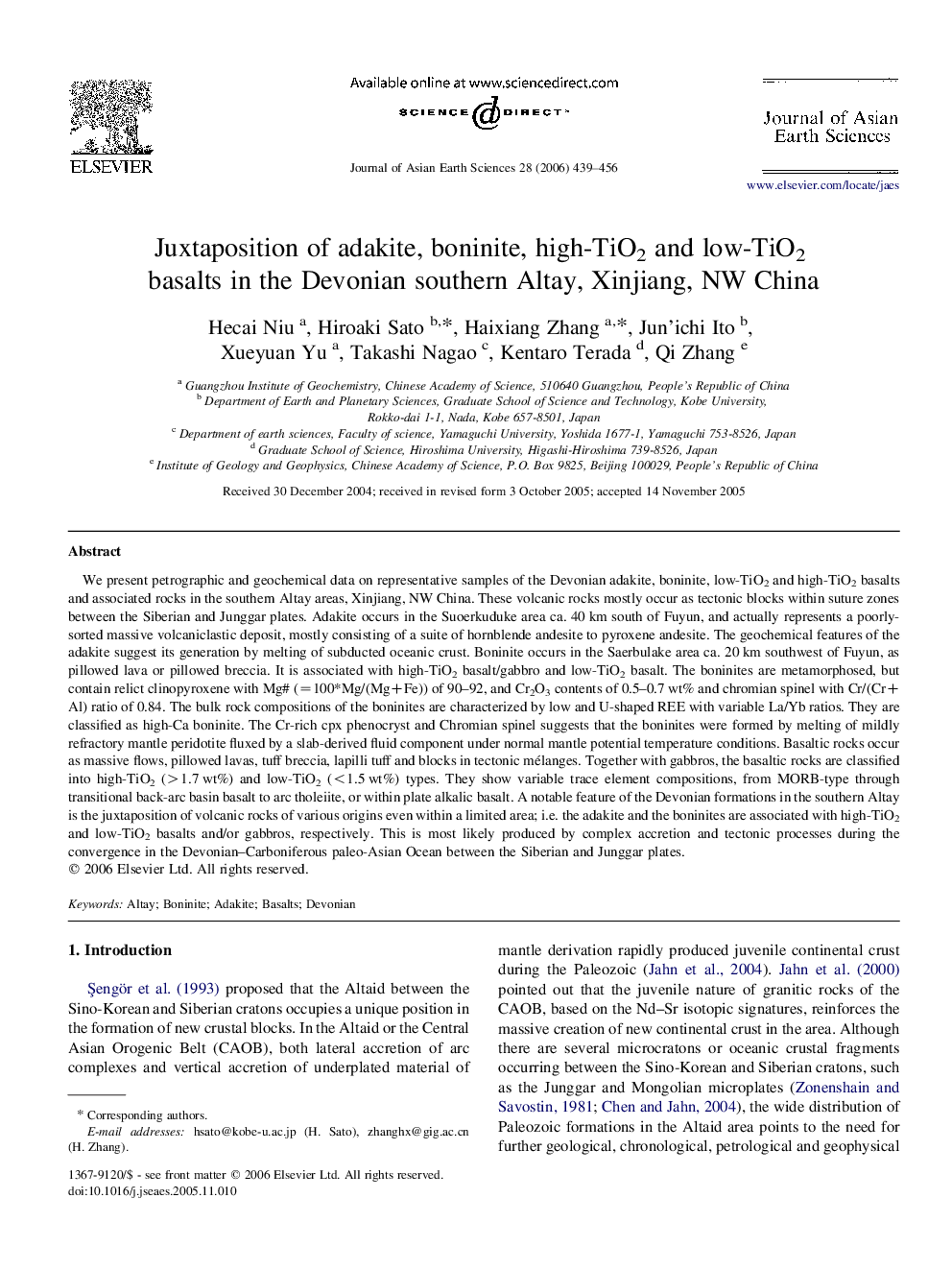| Article ID | Journal | Published Year | Pages | File Type |
|---|---|---|---|---|
| 4732649 | Journal of Asian Earth Sciences | 2006 | 18 Pages |
Abstract
We present petrographic and geochemical data on representative samples of the Devonian adakite, boninite, low-TiO2 and high-TiO2 basalts and associated rocks in the southern Altay areas, Xinjiang, NW China. These volcanic rocks mostly occur as tectonic blocks within suture zones between the Siberian and Junggar plates. Adakite occurs in the Suoerkuduke area ca. 40Â km south of Fuyun, and actually represents a poorly-sorted massive volcaniclastic deposit, mostly consisting of a suite of hornblende andesite to pyroxene andesite. The geochemical features of the adakite suggest its generation by melting of subducted oceanic crust. Boninite occurs in the Saerbulake area ca. 20Â km southwest of Fuyun, as pillowed lava or pillowed breccia. It is associated with high-TiO2 basalt/gabbro and low-TiO2 basalt. The boninites are metamorphosed, but contain relict clinopyroxene with Mg# (=100*Mg/(Mg+Fe)) of 90-92, and Cr2O3 contents of 0.5-0.7Â wt% and chromian spinel with Cr/(Cr+Al) ratio of 0.84. The bulk rock compositions of the boninites are characterized by low and U-shaped REE with variable La/Yb ratios. They are classified as high-Ca boninite. The Cr-rich cpx phenocryst and Chromian spinel suggests that the boninites were formed by melting of mildly refractory mantle peridotite fluxed by a slab-derived fluid component under normal mantle potential temperature conditions. Basaltic rocks occur as massive flows, pillowed lavas, tuff breccia, lapilli tuff and blocks in tectonic mélanges. Together with gabbros, the basaltic rocks are classified into high-TiO2 (>1.7Â wt%) and low-TiO2 (<1.5Â wt%) types. They show variable trace element compositions, from MORB-type through transitional back-arc basin basalt to arc tholeiite, or within plate alkalic basalt. A notable feature of the Devonian formations in the southern Altay is the juxtaposition of volcanic rocks of various origins even within a limited area; i.e. the adakite and the boninites are associated with high-TiO2 and low-TiO2 basalts and/or gabbros, respectively. This is most likely produced by complex accretion and tectonic processes during the convergence in the Devonian-Carboniferous paleo-Asian Ocean between the Siberian and Junggar plates.
Related Topics
Physical Sciences and Engineering
Earth and Planetary Sciences
Geology
Authors
Hecai Niu, Hiroaki Sato, Haixiang Zhang, Jun'ichi Ito, Xueyuan Yu, Takashi Nagao, Kentaro Terada, Qi Zhang,
